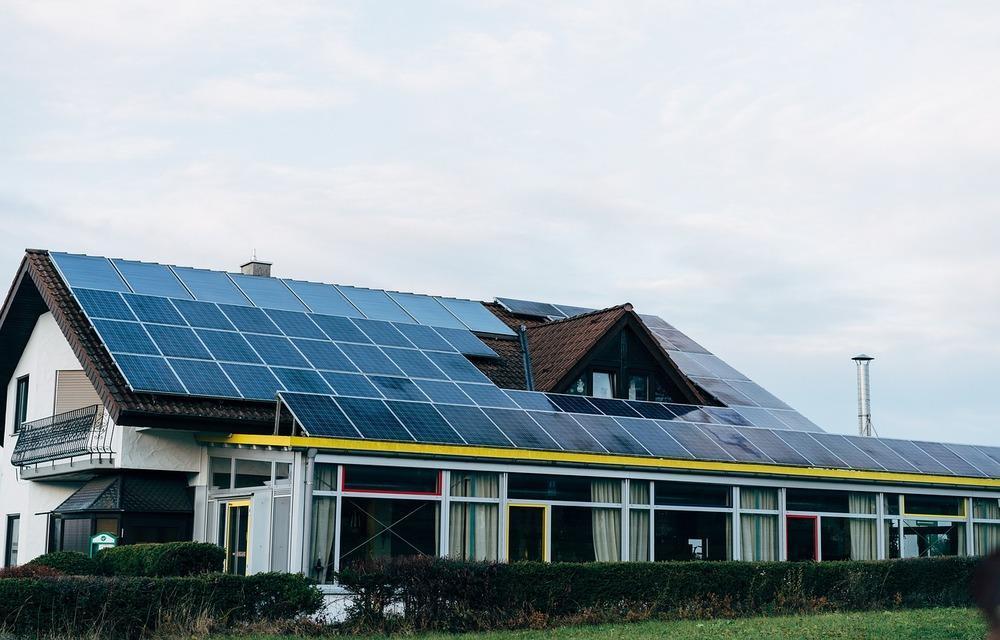What is sustainable architecture? 3 inspiring examples

Sustainable architecture, also known as sustainable or green construction, is an alternative approach to architectural design premised on intelligent use of natural resources. The goal is to create buildings with a lower environmental impact than can be achieved with conventional methods.
It means designing in concern for local ecosystems, hydrological resources and climatic conditions, ensuring that the finished building makes the most efficient possible use of the resources on which it depends.
Cutting energy consumption is a top priority, as this has a major impact on the environment. Consequently, architects will not only take great care when selecting building materials, but will also aim to minimise the amount of energy required, for example, to light, heat and cool the building.
That’s why promoting renewable energy sources is one of the core principles of sustainable construction. It is worth noting that sustainable architecture is a very modern concept, having emerged in the early 2000s in response to the climate crisis and the need for more planet-friendly building methods.
Examples of sustainable architecture
Of course, sustainable architecture is no silver bullet; it cannot solve all of the environmental problems we face today. But it can make a huge difference to alleviating certain problems. The following examples should give you a taste of the rewards of a greener path:
1. Tubo Hotel
Sustainable architecture is not restricted to any one building type, as shown by the growing trend for green hotels. One of the world’s most intriguing examples, Tubo Hotel, can be found in Morelos, Sierra del Tepozteco (Mexico). Here, the hotel rooms have been created using concrete tubes, arranged in a pyramid formation – hence the unusual name.
Thanks to its inventive design, this Mexican hotel offers a truly one-of-a-kind experience. Each concrete tube is made from recyclable materials. The project was conceived as a way to deliver a hotel within a short time frame and at a fairly low cost.
There was nothing else like it in the region at the time, and it opened its doors with just twenty rooms. Today, although the Tubo Hotel still feels strikingly innovative, Mexico has come a long way in terms of a general awareness of the importance of low-impact, sustainable architecture, although these kinds of projects are far from mainstream.
2. Bishan Public Library
It’s not just tourism that benefits from sustainable architecture – this approach can also boost the dissemination of knowledge, as shown by the Bishan Public Library in Singapore.
The building was designed to make the most of natural daylight, with a view to reducing electricity demand. A large central courtyard allows sunlight to flood the interior. The design also features an abundance of lattices, skylights and stained glass that fill the space with soft, harmonious light and accentuate its aesthetic appeal.
Not only are these elements kind to the environment – they also contribute to a calm, reflective atmosphere that makes the library an ideal place to read or study.
This impressive building was designed by Look Architects with a special emphasis on sustainability. Their objective? To recreate the sensation of being in a tree house in this 4,000-square metre space.
3. Sustainable Dance Club
Even venues in the business of hedonism can tap into the benefits of sustainable architecture. Exhibit A: the Sustainable Dance Club.
This nightclub boasts a special dance floor cleverly designed to capture the energy of a night on the tiles. As the crowd finds their groove, their movements generate energy that can be used to light up the dance floor itself and power the sound system.
This is possible thanks to an innovative design that uses the mechanical stress of a roomful of pounding feet to generate an electric charge. This technique is known as “piezoelectricity,” and it is becoming more and more popular all over the world.
The nightclub even runs dance contests in a bid to generate massive amounts of electricity, as its sixty-four piezoelectric modules vibrate to the rhythm of contestants’ feet. The goal is to one day break a Guinness World Record.As if creating clean energy through dance wasn’t enough, the Sustainable Dance Club encourages revellers to choose water at the bar, customised with the addition of flavoured ice cubes. By promoting water over conventional soft drinks, the club is doing its bit to tackle the steep environmental cost of producing aluminium cans.


